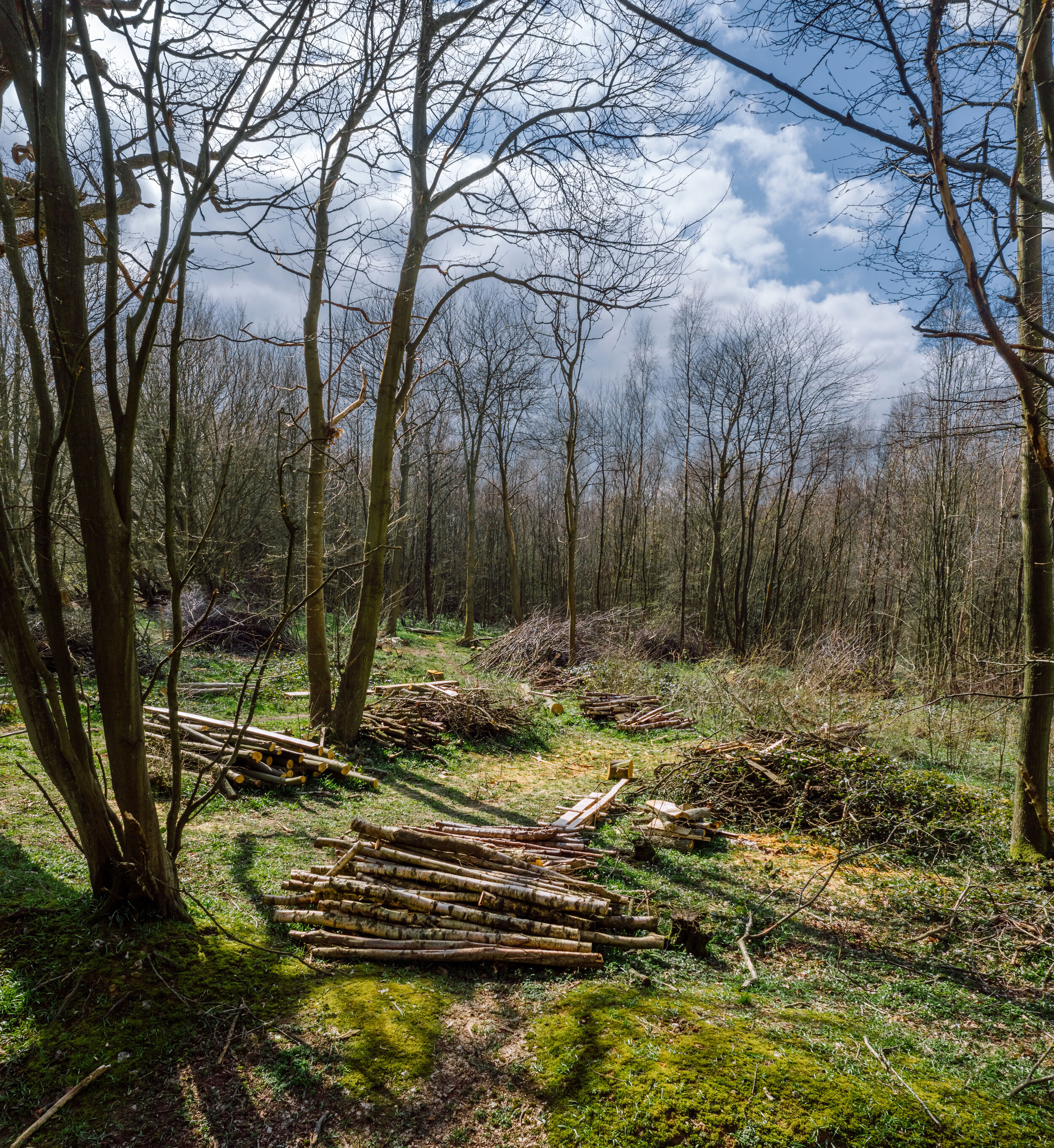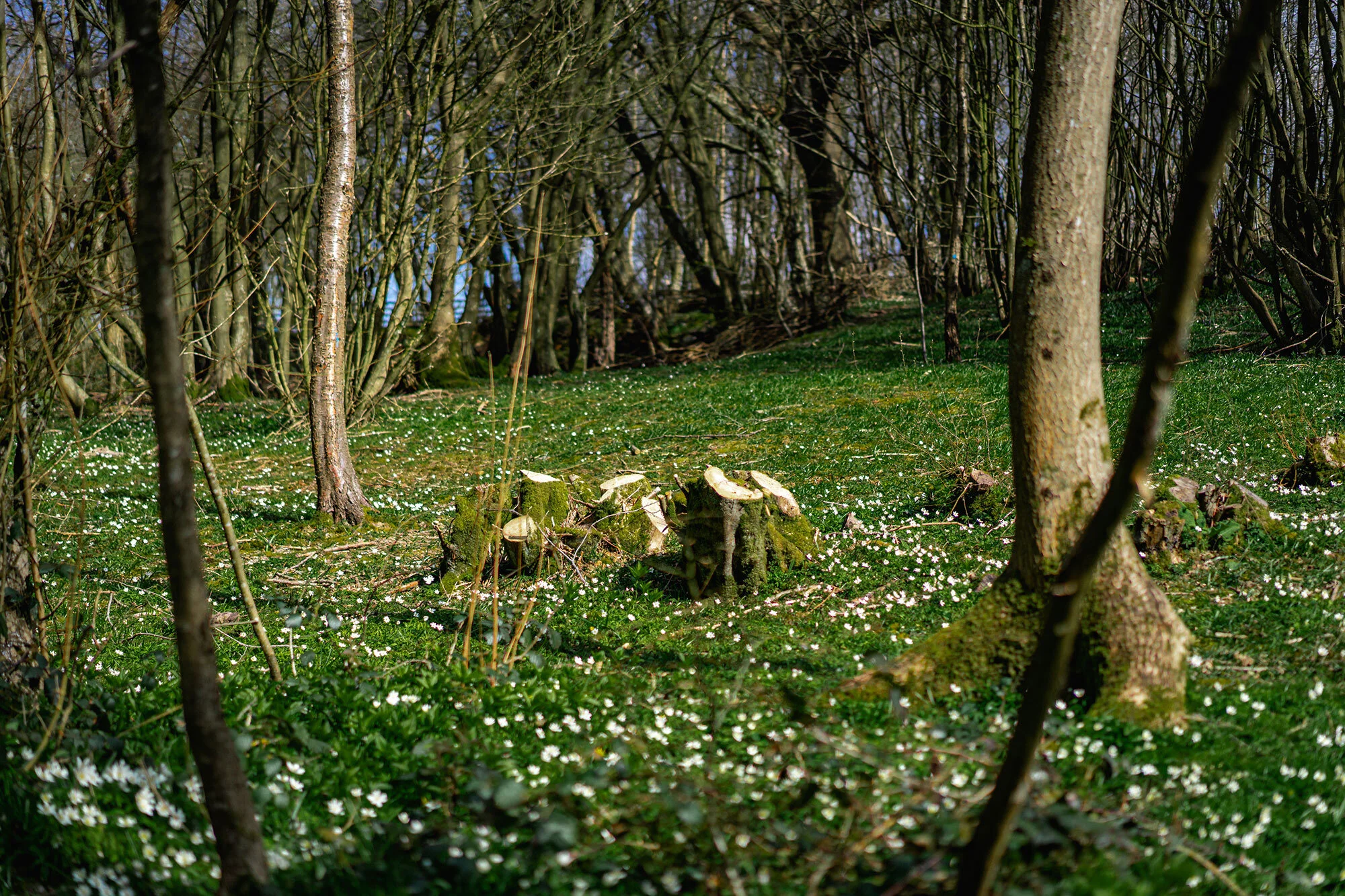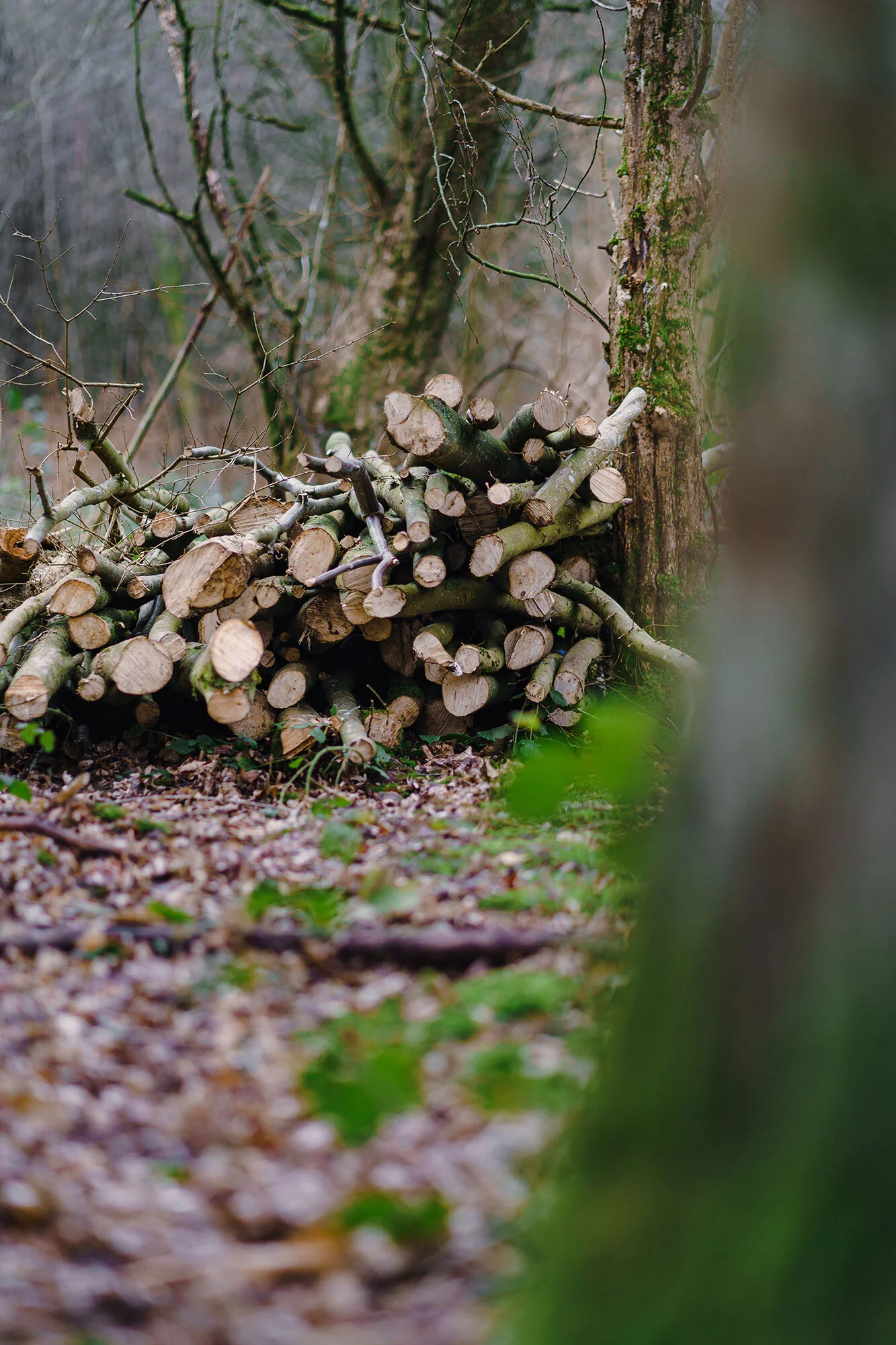A traditional means of woodland management
Coppicing is effectively pruning a broadleaf tree at ground level, usually done during the winter. A first cut will see several new stems sprouting in the spring, ultimately producing several young trees instead of one. Split your area of trees into sections (also called cants or coupes), and cut one cant every year or every few years, and you have a rotational system, a continuous crop of poles and timber. It is this regeneration that makes coppice wood sustainable. All imagery here is from our own, ancient woodland that we coppice.
Resources > Coppicing


A coppiced coupe in winter

The same coppiced coupe in spring

The same coppiced coupe in summer
Habitat
Developing a rotational system within an area of trees also creates a mosaic of different ages and heights of trees, as well as different light levels reaching various parts of the woodland. Having lots of different environments services a great number of different creatures. In fact much wildlife has come to rely on this
system because we routinely coppiced our woodlands for so many thousands of years: woodland fritillary butterflies have reduced in number with the decline of coppicing, for example, and nightingales and dormice are suffering too, among many others. Coppicing then, has many positive impacts.
Carbon
It’s also great because a young stem is doing a lot more vigorous photosynthesising than a mature tree which reaches a balance between growth and decay. So if you have a woodland full of coppice, you have an enormous amount of carbon dioxide being drawn out of the atmosphere and locked away in the form of timber. That stored carbon ends up one of three ways: wood products (where the carbon is stored
indefinitely and perhaps quite beautifully in a bespoke piece of furniture!); woodfuel (vastly less emission-releasing compared to fossil fuels); or as deadwood, creating a lovely habitat for various creepy crawlies and food for decomposing micro-organisms.
The process
Coppicing is normally done using chainsaws, cutting as close to the base of the stool as possible and leaving an angled cut, so that water will run off, rather than sit in the stool and cause rot. Typically billhooks are then employed to clean off the side branches along each pole. A billhook or side axe would also be used to provide the required finish to either end of the pole depending on the product needed, such as a point for a hedge-laying stake, a toothpick angle for a beanpole, or grooming branch tops into fans along one plane to support
growing peas (peasticks). This is certainly the practice when cutting hazel coppice, which is a much sought after species for a number of uses. Its strength, flexibility, and potential for long straight growth, make it the favoured plant for supplying stakes and binders, for example – products needed to secure cut-and-bent stems as part of the beautiful practice of traditional hedge-laying.
A freshly coppiced stool of hazel
Harvest: the wood we coppice each winter
Products of Silviculture
With rich and lively grain details, the Products of Silviculture collection holds onto slithers of bark, encouraging a ‘wilder’ material culture. Produced in limited quantities each year, our team skilfully harvest coppiced wood from the Sebastian Cox’s ancient woodland in Kent, before thoughtfully transforming it into characterful pieces of heirloom furniture.
Underwood
Hazel is the original stimulus for the creation of the Sebastian Cox studio and workshop in 2010 and today inspires our ‘Underwood’ collection, made from hazel normally sourced from the Cox family woodland. Other woodlands where we have sourced coppiced hazel is Plumpton Wood, part of the wonderful Plumpton College estate.








